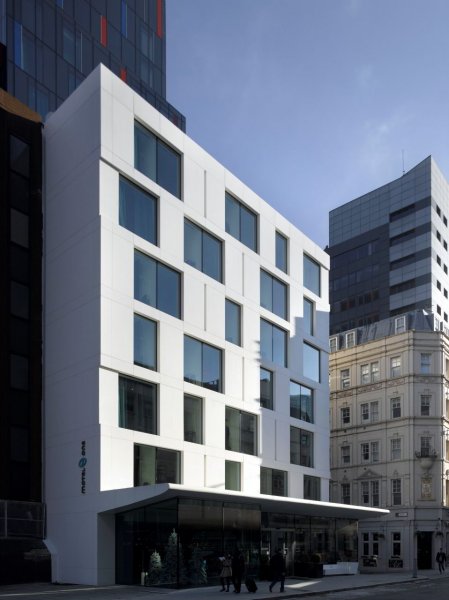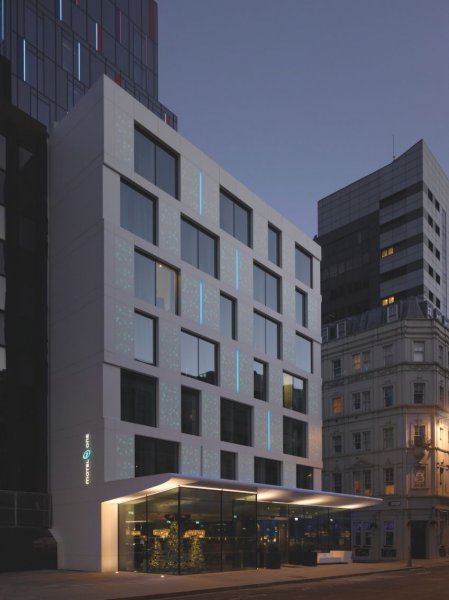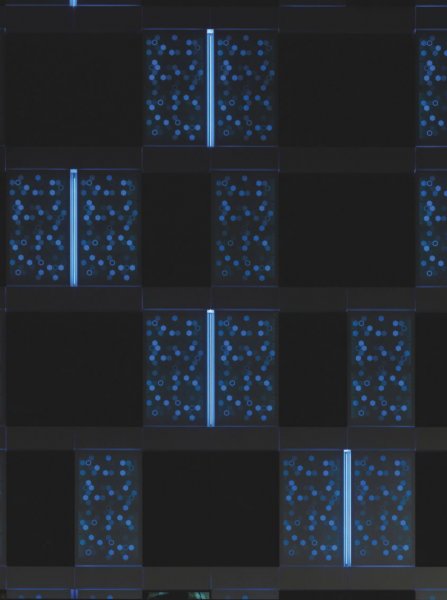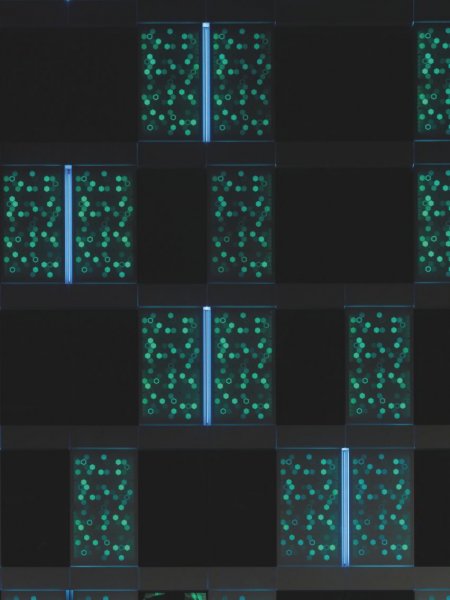The British capital is known worldwide and is popular beyond all measure: that is nothing new. Visitors flock to London to see historically significant architecture alongside modern iconic buildings, visit museums dedicated to just about every topic under the sun, and witness the place where design is constantly being redefined and then promoted around the globe. Although the city has a huge number of hotels and other forms of accommodation, it is not always easy for tourists to find a place to rest their heads at night – the demand is simply too high.
What is new, however, is that Motel One, a German hotel chain, decided to set up business on British soil not only by continuing to work along the lines of the highly successful philosophy of the growing company, which is not automatically a guarantee for overall success given the size of the competition in the metropolis, but by building a hotel featuring a unique lighting design concept for the hotel facade. A ray (or rays) of hope, in the truest sense of the word, spilling out between the existing architecture in the city’s busy financial district, inviting people to take a closer look and step inside.
The idea the project team came up with is clever and ground-breaking, even for London, because this is the first time such a facade design has been realised on a commercial building: a new, illuminated facade layer has been applied over the building’s standard, dull facade, its soft coloured light making for an unusual eye-catcher down and across many streets. To realise the façade, the architects developed solid surface material facade elements using composite material featuring a wide range of functional qualities and comprising approximately 75 per cent natural minerals as well as acrylic colour and pigments. This material can be used for a wide variety of applications, is easy to work with, robust, durable and above all translucent, making it particularly suitable for backlit applications. The facade panels applied to cover a surface of 650 square metres were designed to be as large as possible in order to reduce the number of joints. This also has the advantage that the luminous facade is not recognised as such during daylight hours. In fact, it looks puristic, as if cast in one piece. Once the sun begins to go down the regular pattern integrated into the facade begins to glow softly and change colour.
This is the result of precision craftsmanship and sophisticated technology. Polygonal patterns were cut into the rear side of the 12 millimetre thick panels to different depths to exploit and enhance the translucent quality of the material. Dimmable RGB LEDs were then mounted into these indentations, and consequently programmed to change colour gradually and softly. The honeycomb structure is illuminated in such as way that some modules appear to be open and others sealed off completely. Furthermore, the degree of translucency varies according to the different depths at which the LEDs are embedded in the panels. The overall effect is that the lighting is spread evenly across each panel with an array of spots of coloured light giving rise to an attractive, natural-looking pattern. The new "urban lighthouse" kid on the block is located close to Tower Bridge. You might go as far as to say that people are attracted to the new hotel like moths to light, or that the well received hostel with its honeycomb light patterns is as busy as a beehive. The honeycomb pattern is also found inside the building by the way, for example in the bar. For some projects, their prime goal is to stand out – at any price. In many cases, the effort involved goes well beyond the target, which generally ends up with lighting that is way too bright, flashy or non-aesthetic being incorporated into architecture to create a so-called media facade. Totally inappropriate within the urban setting, not in line with the dynamics of city life or the existing urban lighting. The design of this illuminated hotel facade is fortunately another story altogether. Soft, coloured light that blends in with its surroundings, subtly standing its own thanks to a clearly structured, and aesthetically pleasing pattern. Analogies to nature are in evidence, cool and reserved yet puristically appealing in the daytime and only developing its enchanting appearance when darkness falls. And it works. Located in a densely populated, forever trendy metropolis, the London Motel One hotel does indeed catch one’s eye, because of its facade lighting. The materials applied to achieve this have been put to good use, optimised to demonstrate a combination of natural qualities and smart – in the truest sense of the word – lighting design.
A new, modern beacon that enhances the London cityscape, sending out subtle signals to please passers-by and attract clientele.
Project team:
Architecture and design: Mackay + Partners
Facade: Rosskopf + Partner ; Architectural Aluminium Ltd.; 5D Engineering



